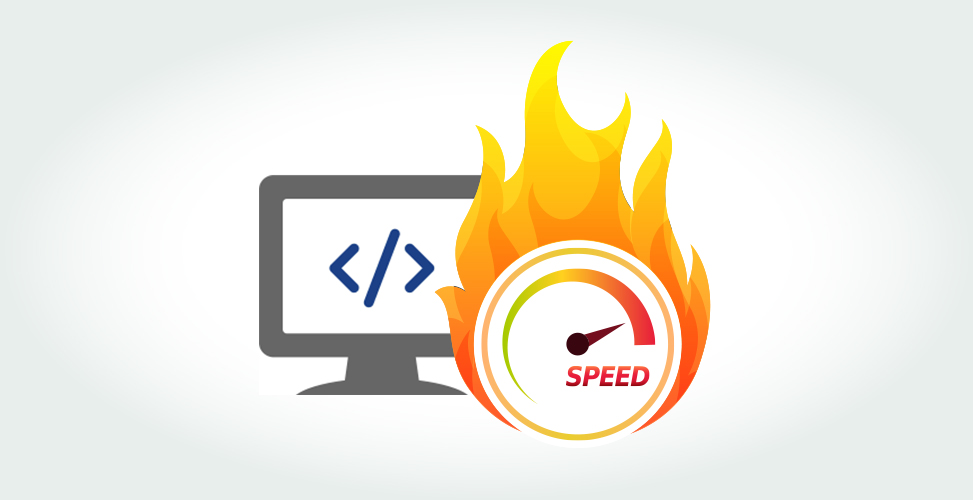Ways to Increase Page Speed on Image-Heavy Websites

Images are crucial part of any website. It is not possible for a website to attract audience without high quality attractive and relevant pictures. In short, you can find it extremely tough to put a lasting impression on potential customers.
With high quality images, you can increase engagement among visitors and reduce bounce rates to a great extent. Unfortunately, in some cases, images may also be the reason for a website’s weak web performance! Image-heavy websites load slow. Major search engine crawlers such as Google, Yahoo! and Bing hate slow loading websites. Hence, it is crucial to understand that heavy images can drastically increase actual page loading times.
Now the question is how websites can display premium quality images while keeping the size to minimum?
Here’s a list of some practical steps business website and blog owners can follow to increase page speed:
Choice of File Format
There are a number of different file formats available for images used on the internet. You need to choose an appropriate format for your website. Make sure you understand formats used for the purpose and choose accordingly:
PNG (Portable Network Graphics) – This is a standard requirement for a lossless compression wherein the quality of image quality is very high which automatically increases the file size.
JPEG (Joint Photographic Experts Group) – The quality of image is lower than PNG which reduces file size. It utilizes lossy as well as lossless compression algorithms. The formats are mainly used in digital camera images.
PNG files are considered of higher quality. It allows users to remove background from images. On the other hand, JPEGs can be compressed easily to make a smaller file size.
GIF (Graphics Interchange Format) – It utilizes only lossless compression. GIF is a perfect choice animated for images owing to its small file size. These are GIFs are popular across the internet for displaying animated pictures on blog posts and social media.
Compression and Resizing
When it comes to optimizing web images, image compression is vital. Make sure you do it right to avoid affecting the quality of the picture. You need to shrink by indirectly using HTML and CSS while the browser renders web page.
Quality of Image
Reducing quality of image is not a thing for business owners for fear of appearing worthless to potential clients. However, reducing quality in a correct way will not affect quality of image and help page to load faster for the visitor. It is advisable to reduce image quality by 10% to 20% which does not have any impact on image quality yet reduce file size dramatically.
Image Optimization Tools
There are a number of free and paid image editing software you can use for optimizing images for performance. The exact choice will depend on your preference and the type of optimization you wish to have. Some of the best choices for image optimization tools include the following:
- Adobe Photoshop
- JPEG Mini
- OptiPNG
- ImageRecycle
- JPEG Optimizer
Scalable Vector Graphics (SVG)
These are scalable vector mainly used for simpler images, logos, and text. An SVG file comprise of text describing lines, shapes, and curves of images. This helps SVGs to scale for all types of screen size and resolution fast.
Additionally, the images can be indexed by search engines. SVGs format is also compatible with most of the web devices and browsers.
Mobile Ready Images
Google has a preference for mobile-first browsing. This makes it almost mandatory for businesses to build a mobile-friendly website. Mobile browsing demands responsive images compatible with all device types such as iOS, tablets, android, etc. SVGs will make sure the images on website are responsive.
Browser Caching
The method facilitates websites to store static data within web browser of a user. When a user needs the same data, it is promptly served with the similar data from local storage. It does not require downloading the data from the webpage. With browser caching, your web page can offer a super-fast and improved user experience.
Image-related Issues on Website
There are a number of tools that can test your website specifically for image-related issues and page speed. For instance, Google PageSpeed is a free tool that highlights un-optimized images on your website. It will also offer recommendations on ways to improve it. Google Lighthouse is free open source software. It can be used by web developers to make sure websites they are building are light.
To Sum Up
As per Google, pages that take more than 10 seconds to load tend to suffer from higher bounce rates. This means website with heavy images can experience more bounce rates. Following the above listed practical tips can ensure enhanced user experience for your site and help it rank higher in search engine results pages to attract more traffic.
